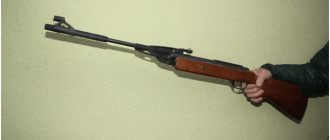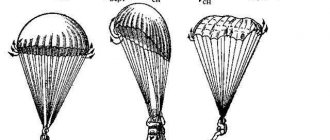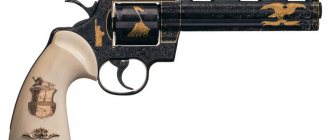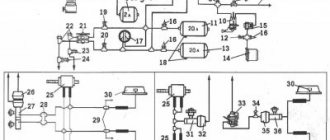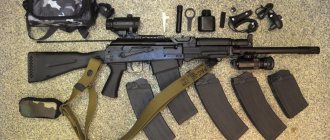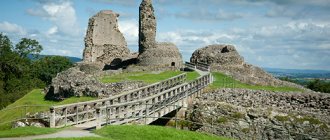Development of castle construction
The idea of building castles in the Middle Ages was to build a well-fortified structure that could withstand a long siege. It was supposed to provide protection not only to the owners, but also to the residents of the surrounding villages. The first such structures appeared on the territory of European countries in the 9th-10th centuries.
Initially, they bore little resemblance to the stone castle-fortresses typical of later times, many of which have survived to this day. Until the second half of the 10th century, castles were built from wood . The place chosen was an elevated natural or earth-filled hill, which was surrounded by a moat with water and a wooden palisade. A staircase led to the top, which was dismantled in case of danger.
At the foot of the hill there were workshops, mills, and servants' homes. Cattle were driven here during an enemy attack. Peasants from surrounding villages could also take refuge in the courtyard inside the stockade. The construction was planned so that in the event of a long siege, it would be possible to provide the basic necessities of the castle defenders for several months.
The structure of a feudal knight's castle became more complicated over time. From the beginning of the 9th century, these structures began to be built of stone and were impregnable fortresses, the walls of which could withstand powerful enemy attacks and provide long-term defense. Their size has also increased. It was problematic to erect such a structure on an embankment, so natural hills were chosen when planning the construction. The ancient feudal estate was thus visible from afar. This helped its owner keep control of his vassals, demonstrating who was the master of the surrounding area.
Marks, tunnels and weapons of mass flooding
Local knowledge is the most important weapon.
Besiegers have always had one main advantage over defenders - the ability to initiate battle where it is convenient for them. In addition to walls, towers and ditches, the defenders had their own advantages: knowledge of the terrain and sighting. The fact is that both throwing and later gunpowder artillery were used not only by attackers. The correct fortress had its own throwing machines. There could even be demands that have become entrenched in the social fabric (for some reason) as an instrument exclusively of the besiegers.
The accuracy of Medieval throwing artillery was very low. It was very important to aim correctly. Garrisons with throwing machines always “targeted” the area in advance. Therefore, if the attackers spent two days assembling a beautiful siege tower, and on the third day a huge stone flew into it from behind the wall from the very first hit, there was no need to be surprised.
However, it was possible to ruin the life of the attackers in many other ways. For example, a small detachment could leave the castle under cover of darkness and set fire to something in the besiegers' camp. And the most resourceful and lucky defenders did not shy away from using even entire bodies of water against the attackers. The fact is that a water ditch was often the product of a dam. And if the enemies set up their camp incorrectly, they could simply be taken and flooded. Like neighbors downstairs.
Brief description of the main elements
With all the variety of architecture of castles that have survived to this day, clear patterns can be traced in their layout.
The plan of the medieval castle included the following elements:
- Donjon is the main free-standing tower, the dwelling of the knight-owner (3-4 floors).
- Bridge over the moat to the gate and access road.
- Walls and observation towers.
- Yards.
- Chapel.
- Wells.
Since the 11th century, the walls have been built of stone. They were made wide not only for fortification, but also so that the defenders of the castle could move along them. They were hiding behind the battlements on top of the walls. There were towers with loopholes in the corners. One of the surviving such castles, Chambord, is located on the Loire and clearly demonstrates their location.
The passages leading from the towers to the walls were additionally protected by strong doors. They, as well as sudden changes in height, divided the walls into parts, which made the assault more difficult. Inside the walls there were corridors along which the defenders of the fortress could reach a secret passage leading beyond its boundaries.
Behind the walls of the castle began a lower courtyard, sown with grass for livestock. Here there were servants' dwellings, workshops, stables, barns and warehouses. The warehouses were supposed to provide the inhabitants of the castle with provisions for a long time, because enemy attacks, especially during a large-scale war, could be frequent. The condition of the warehouses was carefully monitored. The provisions could be spoiled by rodents or it could get wet, and this was a real disaster, since long-term defense became impossible.
The construction of the castle in the Middle Ages provided for the presence of one or two more walls inside, which protected the donjon and the main tower of the fortress.
Features of this building:
- Rounded shape (in the era of wooden castles, dungeons were square). This layout is dictated by economy and the fact that rounded walls are stronger.
- Spacious living rooms and adjacent smaller bedrooms.
- Small narrow loophole windows that let in little light, as a result of which there was always twilight inside.
- The non-residential first floor without windows, which could be used as a warehouse or a dungeon (in the latter case, it could be accessed through a hatch in the floor of the second floor).
- Entrance to the second floor is through a light gallery or staircase from some other building.
- Heavy hatches and ladders separated the floors from each other. When one of the floors was captured, the staircase was pulled inward, which allowed the defenders to hold out for some more time.
- An observation deck on the roof with a guard on it.
The medieval knight’s home was very far from the luxurious palace of Europe of the Renaissance and Enlightenment. But in later times, dungeons were used less and less by their owners for living, if peace reigned around them. For this purpose, separate comfortable chambers were erected in the courtyard, where guests could also be received.
On any diagram of a medieval castle you can see its main elements. Their location could vary somewhat, but the general principles of planning remained unchanged.
The bridge was very heavy, but it was built so that one person could lift it . This was achieved thanks to a system of counterweights. When raised, the bridge served as additional protection for the gate from arrows and rams. In front of the gates, a kind of fortress called a barbican was often erected, which differed from the castle in its small size, and above them a gate tower. For their doors, oak wood covered with iron was used. Forcing the fortified gates to open from the outside was thus quite a difficult task, especially under a hail of arrows from the defenders.
The passage to the gate tower was blocked in case of danger with iron bars. Several of them were planned so that the enemy detachment could be divided into parts and shot with crossbows. Unexpected turns of the road at right angles also served the same purpose. At the end, the attackers were met by another strong gate. Next to the main gate, intended for horsemen, a narrow stone staircase was built, a passage for pedestrians.
The access road to the bridge was usually laid along the walls. This was done to facilitate the collective defense of the inhabitants of the castle during an enemy attack. There were sentries posted on the walls. Thus, it was difficult to get to the bridge undetected in order to attack the gate or make a tunnel.
They destroyed the wall - so what?
It is difficult to take a wall by storm; it is better to destroy it.
The wall has always been one of the most vulnerable places in the fortress. It could be broken with battering guns. With the advent of gunpowder artillery, this ceased to be a problem altogether. However, strange as it may seem, the fall of the fortress wall still means very little. A hole in the wall implies that an attack will occur soon.
An interesting fact: in its original meaning, the word “mine” did not mean some kind of bomb, but an engineering structure, or more precisely, a tunnel under a fortress wall. The undermining was done when the fortress stood on soft soil, and not on a rock. This was not the easiest, but the safest and surest way to destroy the fortification. Moreover, unlike shelling with battering machines, the destruction of the wall due to undermining was very difficult to notice.
There were galleries under the fortress in case of undermining.
But the soldiers of the garrison were not fools either. When a wall breaks, even under cannon fire, it is a fairly lengthy process. The defenders had enough time to leave the wall, and most importantly, to create a barricade-pocket right behind the place where part of the fortification would collapse. As a result, the “lucky” besiegers ran into the hole and immediately found themselves sandwiched between three fires. This simple technique has saved fortresses from falling more than once.
Interesting fact: however, the fortresses also had anti-undermining measures. Very often, special tunnels were dug under the walls of the castle - anti-mine galleries. The defenders had to sit in them, in complete silence, and listen to see if the sounds of digging could be heard from somewhere. If suspicions arose, a barricade-pocket was immediately erected in this place at the top.
The life of a knight in his home
The history of the Middle Ages shows that the life of knights in castles, especially in an era of fragmentation, can hardly be called calm. Peace, if it was concluded, was fragile, and storming the fortress was commonplace. The description of a medieval castle suggests that such a structure primarily served a defensive function and was not very cozy inside .
In winter, the castles were heated by fireplaces, but this provided little protection from the cold and dampness. The walls often froze through. Latrines were often separate wooden structures located on the outside of the walls. Their use in the cold season was problematic.
The inhabitants of the castle often had to neglect hygiene, and unsanitary conditions reigned inside. Water from wells was used mainly for cooking and was used for drinking by livestock.
Few people thought about the comfort of the inhabitants when designing the structure, but it was this approach that helped many representatives of the feudal class avoid the capture of their fortresses, plunder and death.
Weakest point
Zahab is a kind of trap for attackers between two goals.
At all times, gates have been the most vulnerable part of a fortification. Therefore, in the Middle Ages, the greatest attention was paid to their defense. Correct gates were always equipped with a drawbridge, as well as a lowering grate. It is much more important that in the best fortresses they tried to make several gates. When they took them alone, it didn’t change the situation much. By the way, the corridor between the two gates was a real “death zone”, since in the right castles it was literally shot from all sides. However, when the last gate was about to fall, the defenders often also built another barricade behind it. Exactly the same as in the case of collapsed walls.
Spiral stairs - for defense
0
Spiral staircases are one of the most famous features of medieval castles. In fairy tales, princes climb the tower to save their princesses. But in fact they served a more prosaic and incomparably more important purpose: these stairs rise clockwise, which means that anyone who climbs them will have their right hand facing the wall. The wall will not allow you to move your hand freely, and therefore, to wield a sword. Thus, those defending the castle had an advantage since they were facing the opposite direction and their right hands were free.
×


